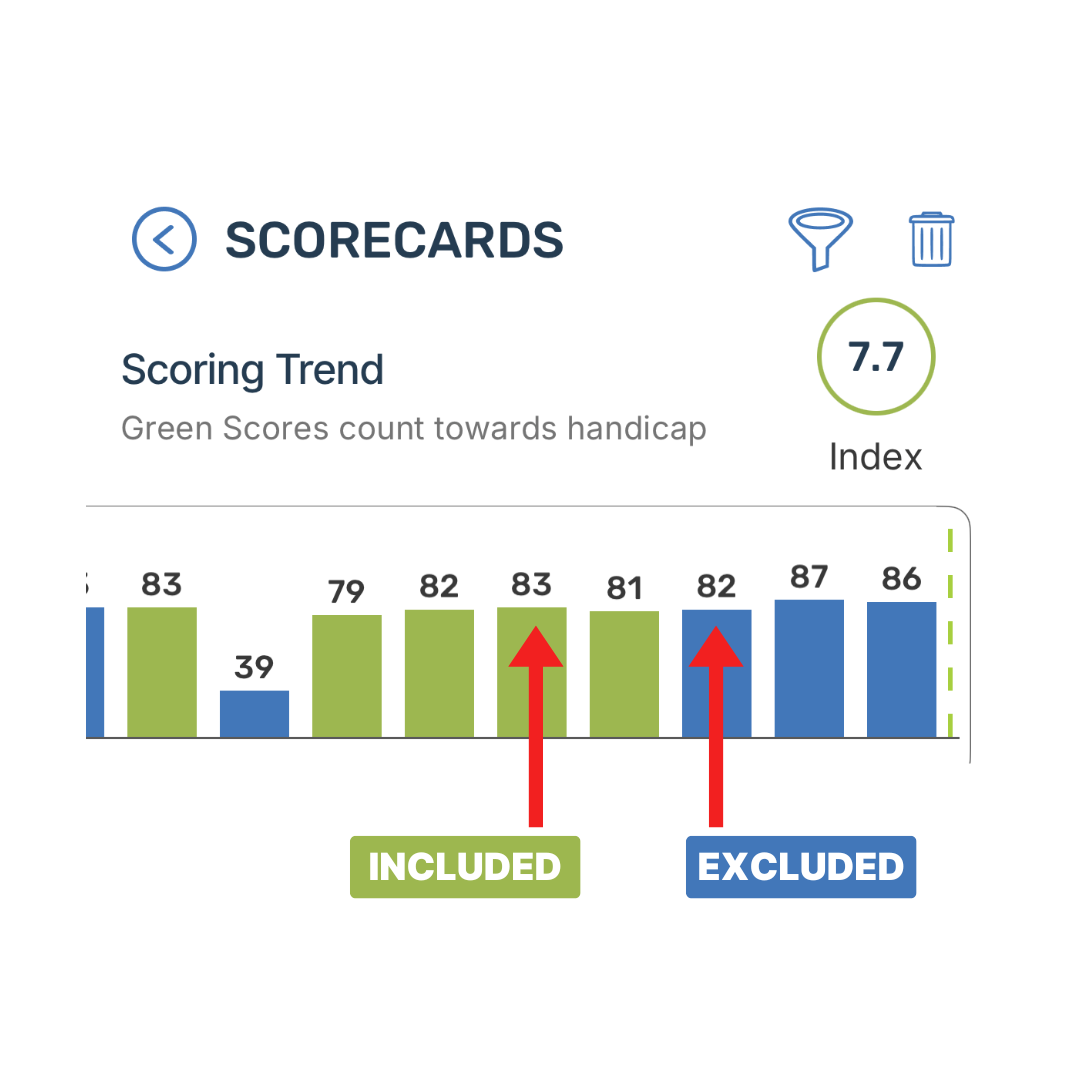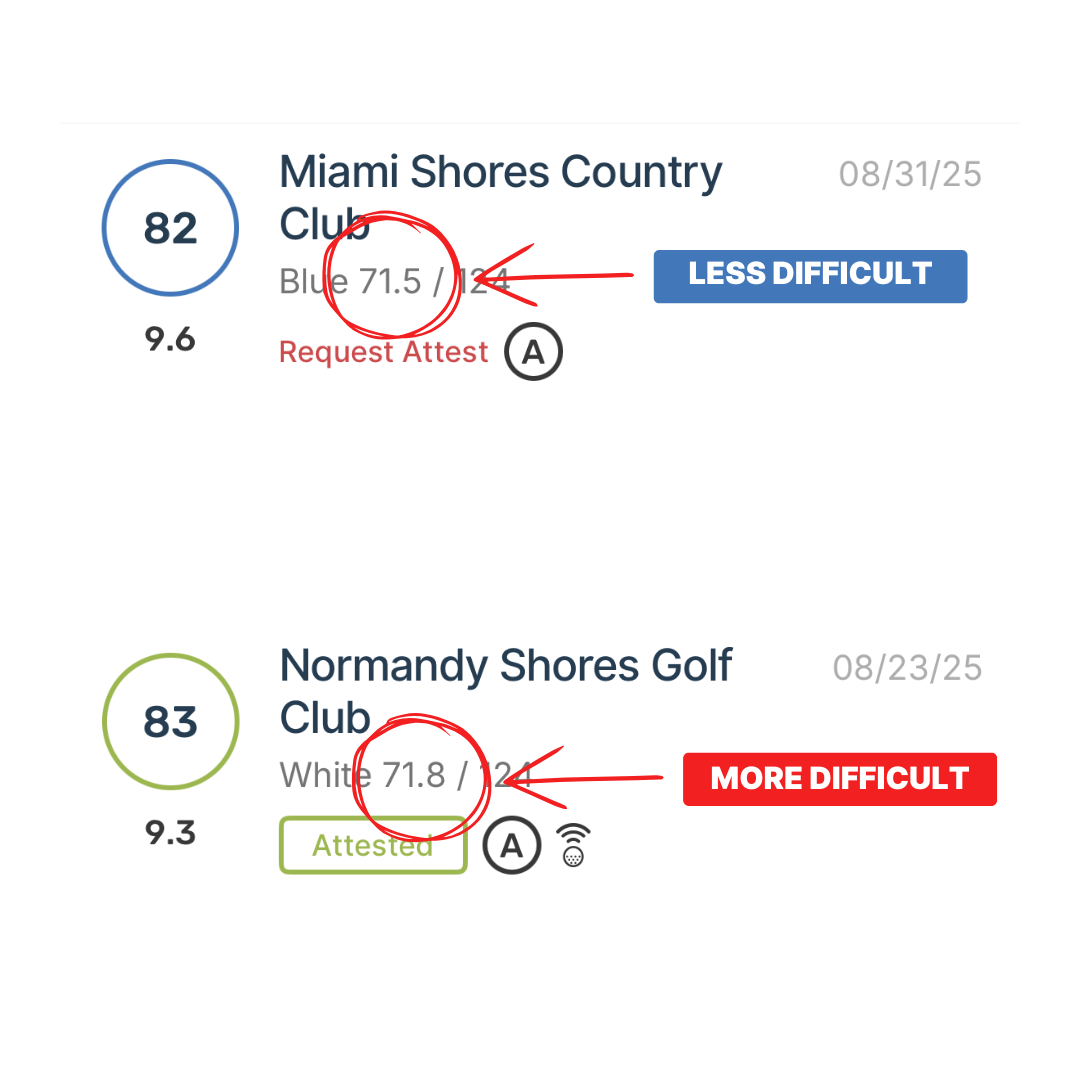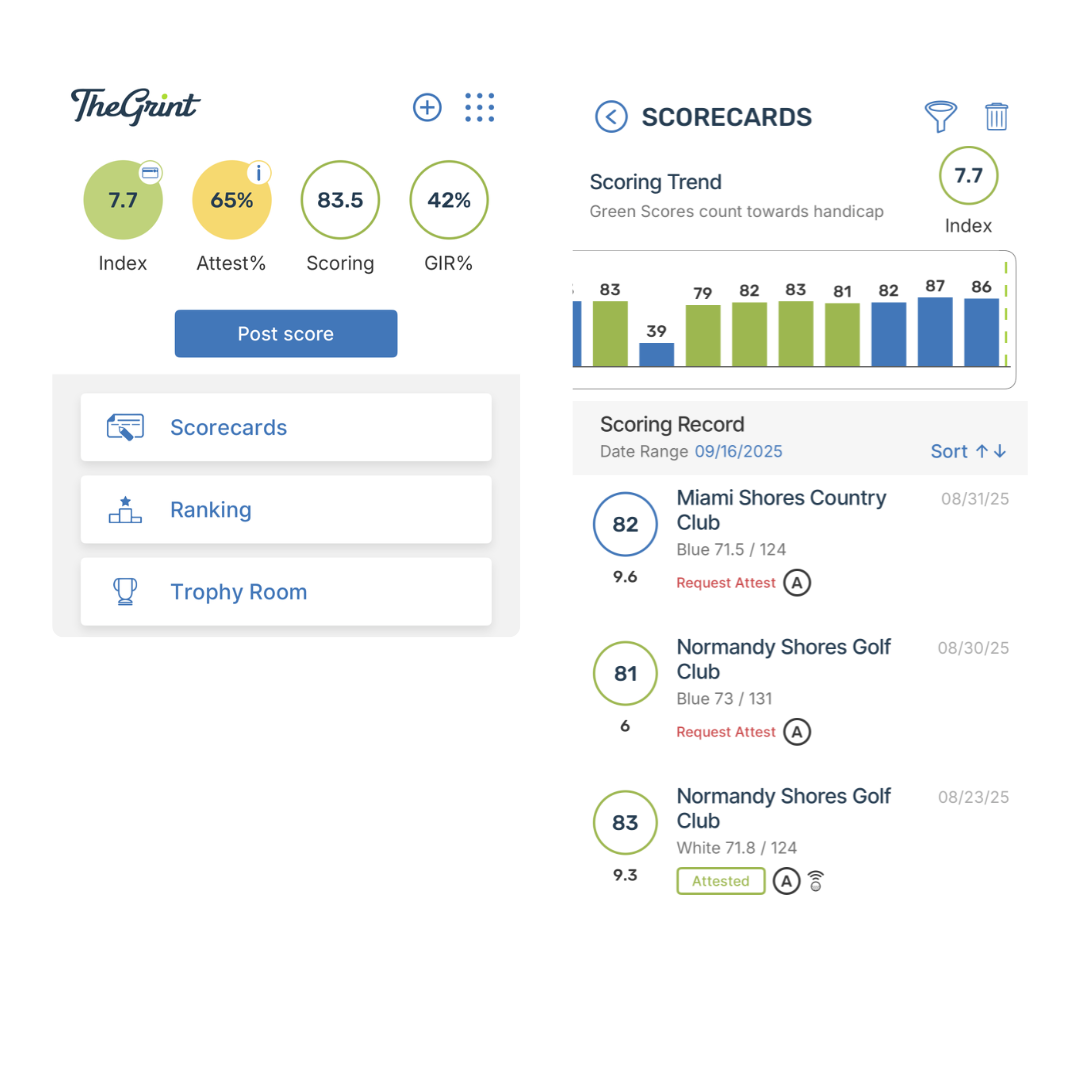
Sam O'Brien
8 mins
If you’ve ever looked at your handicap index and noticed a “worse” score being counted while a “better” one is ignored, you’re not alone. It feels wrong at first glance. How can an 83 matter more than an 82?
The answer lies in how different handicap systems account for scores differently based on a number of different factors.
TheGrint integrates with the World Handicap System (WHS) and GHAP (outside the US). Both systems have their own nuances, but they both take into account more than just your raw scores to determine your handicap.
For the sake of this article, lets assume you've got your WHS Handicap ID linked to TheGrint.
Let’s imagine you’re a 7.7 handicap golfer.
It was a normal sunny day with great conditions on both days. To your surprise, Round A doesn’t count toward your handicap, but Round B does.

The key thing to understand: on the WHS system, your handicap isn’t based on your 8 lowest scores. It’s based on your 8 lowest differentials. A differential is a standardized measure of your performance that accounts for:
This makes handicaps portable. Shooting 82 at a municipal par-70 isn’t the same as shooting 82 at a championship par-72 with a higher rating. The math adjusts to reflect that.
That 0.3 difference in Course Rating may seem small, but it increases the difficulty baseline. WHS accounts for this, meaning your 83 was played against a tougher standard than your 82.

WHS applies a cap called Net Double Bogey - which is the maximum score you can post on any hole for handicap purposes.
So while your card says 83, your adjusted gross score is treated as 82.

The WHS also the concept of "PCC" - the Playing Conditions Calculation. A score may be issued a further adjustment if course and/or weather conditions significantly impacted scored on that day.
But in this example, there is no course conditions adjustment.
WHS standards indicate that a Score Differential is calculated using the following formula:
(113 / Slope Rating) x (Adjusted Gross Score - Course Rating - PCC adjustment)
Based on this formula, the following differentials are calculated and displayed inside TheGrint:
Even though Round B was a higher gross score, the adjustments make it a better performance relative to difficulty.

This example shows why you can’t just eyeball your handicap based on score alone. WHS is designed to create a fair, portable handicap system worldwide, adjusting for:
So when you see an 83 “beat” an 82 in the handicap system, it’s not a mistake... it’s TheGrint doing the exact math required by the WHS formula and displaying that in the app the way it’s supposed to.

Your handicap is not a reflection of your raw scores - it’s a reflection of your performance relative to difficulty. That’s why an 83 can be more valuable than an 82.
Next time this happens to you, remember: the math is working in your favor, even if it feels counterintuitive. Check for course difficulty, blowup holes, and crazy conditions. And you'll soon see why one score counts, and another gets left off to the side.
--------
Note that this explanation adheres to the WHS system which is the only handicap system offered to golfers in the United States on TheGrint. If you're outside the United States and using an alternative handicap provider such as GHAP, it has a different way of calculating which scores count towards your handicap. Regardless of the handicap system you use, TheGrint will do all the heavy lifting and always tell you which scores count for your handicap.
To read more about GHAP, head to Ghap.Golf.